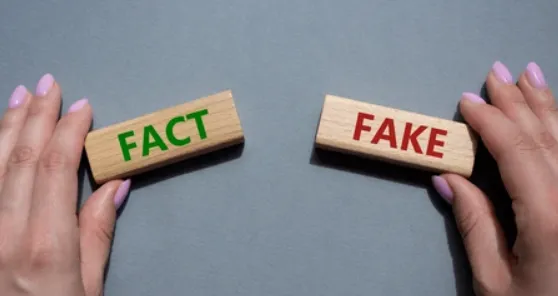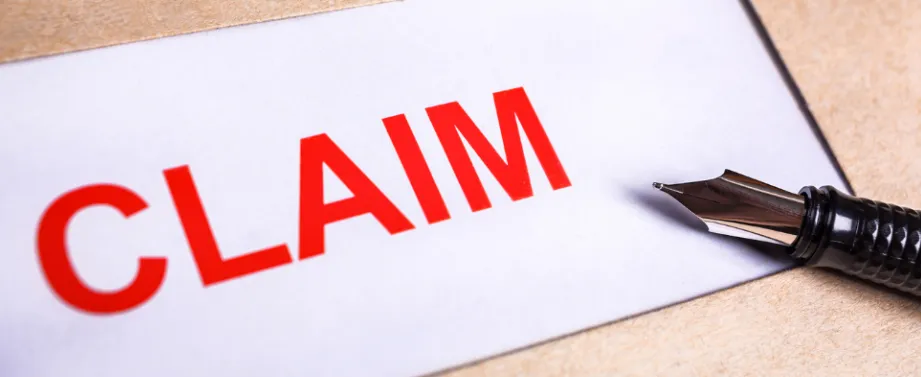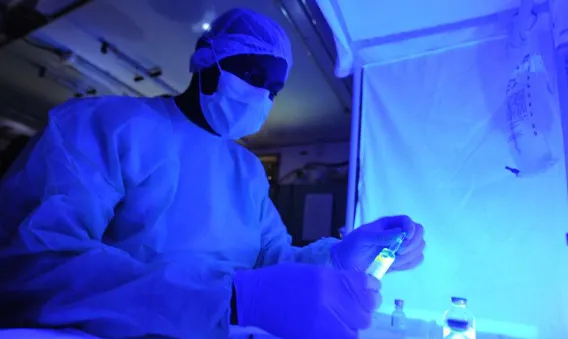Busting the Biggest Toe Spacer Myths: What Marketing Won't Tell You
Busting the Biggest Toe Spacer Myths: What Marketing Won't Tell You
Ready for some myth-busting? The toe spacer market is flooded with bold claims that sound amazing but often crumble under scientific scrutiny. Let's separate marketing magic from medical reality.

The Marketing Problem: When Hope Meets Hype

Here's the thing about toe spacer marketing: it's built on a foundation of truth, then stretched into the realm of fantasy. The basic premise—that spreading compressed toes is beneficial—is scientifically sound and resonates with people's real experiences of painful, cramped feet.
But when this legitimate concept gets filtered through marketing departments, it morphs into claims that would make even the most optimistic researcher cringe.
🎯 The Marketing Sweet Spot: Toe spacer advertisements live in that dangerous space between "biomechanically plausible" and "scientifically proven"—and most consumers can't tell the difference.
Let's dissect the biggest myths one by one.
Myth #1: "Toe Spacers Will Permanently Correct Your Bunions and Hammertoes"
This is the granddaddy of all toe spacer myths, and it's the most misleading claim in the entire industry.
The Marketing Promise
Walk through any online marketplace and you'll see variations of this claim:
- "Straighten your toes naturally!"
- "Reverse bunions without surgery!"
- "Permanently fix hammertoes at home!"
These promises often come with compelling before-and-after photos showing dramatically straighter toes and reduced bunion prominence.
The Scientific Reality Check
Let's be absolutely clear: structural bone and joint deformities cannot be "fixed" by a passive, external device.
Podiatric surgeons and researchers are unanimous on this point. The evidence we discussed in our bunion research article bears repeating: while toe spacers provide significant pain relief, they produce no statistically significant change in the underlying deformity angles.
🏥 What Surgeons Know: The only definitive method for correcting structural joint malalignment is surgery. Period. No amount of wishful thinking changes this anatomical reality.
The Photo Deception
Those convincing before-and-after photos? Here's what's likely happening:
"Before" photo: Taken with toes in their cramped, deformed position "After" photo: Taken while wearing spacers, showing temporary alignment improvement
The missing information: What happens when the spacers come off? The toes typically return to their deformed position because the underlying bone structure hasn't changed.
📸 Photography Trick: It's like taking a "before" photo of someone slouching, then an "after" photo of them standing up straight, and claiming you've permanently fixed their posture.
The Partial Truth That Sells the Lie
Here's what makes this myth so persuasive: there IS evidence that combining spacers with dedicated exercises can produce measurable improvements in deformity angles.
But this is a far cry from the passive, "just wear them and watch the magic happen" approach suggested by most marketing. The real process involves:
- Consistent, targeted exercises for 3+ months
- Active use of spacers during weight-bearing activities
- Comprehensive foot health changes (shoes, gait, strength training)
The marketing version: "Wear our spacers and fix your bunions!" The research version: "Use spacers as part of a comprehensive, active rehabilitation program for possible modest improvements in alignment."
Guess which one sells better?
Myth #2: "Toe Spacers Are a Proven Way to Improve Balance and Athletic Performance"
This myth exploits our intuitive understanding that a wider base should equal better stability.
The Athletic Performance Promise
The marketing narrative goes like this:
- "Unlock your natural athletic potential!"
- "Improve balance and stability instantly!"
- "Reduce injury risk with better foot mechanics!"
The finger-spreading analogy is popular: just like spreading your fingers improves stability in a handstand, spreading your toes should improve everything from running to yoga.
The Research Reality: Weak and Contradictory
Here's where the marketing crashes into science: the evidence for performance enhancement is weak at best, and sometimes contradictory.
The comprehensive research analysis we've covered shows exactly how weak these claims really are.
The Disappointing Study Results
A 2023 pilot study involving young, healthy, active individuals found that immediate use of toe separators had no significant effect on either dynamic balance or ankle range of motion.
Read that again: no significant effect on balance. This directly contradicts one of the most common marketing claims.
The Exception That Proves the Rule
One study did report improved dynamic balance when using toe spacers with minimalist footwear. But here's the catch: the study's own authors acknowledged significant limitations, including:
- Only young, healthy subjects tested
- Results difficult to generalize to other populations
- Unclear whether benefits would apply to older adults (who need balance improvements most)
⚖️ Scientific Honesty: When researchers themselves point out their study's limitations, that's usually a sign the results aren't as definitive as marketing would have you believe.
The Overstated Claims Problem
The phrase "proven to improve athletic performance" appears frequently in toe spacer marketing. This is a classic example of overstatement.
In science, "proven" has a specific meaning—it requires:
- Multiple independent studies
- Consistent results across different populations
- Peer-reviewed validation
- Statistical significance
The current evidence for athletic performance enhancement meets none of these criteria.
🔬 Scientific Language vs. Marketing Language: Scientists say things like "preliminary results suggest possible benefits." Marketers say "proven to enhance performance." Same data, wildly different spin.
Myth #3: "All Toe Spacers Are Functionally Identical"
This myth might seem less dramatic than the others, but it's equally misleading and potentially dangerous.
The "Generic Solution" Assumption
With hundreds of similar-looking silicone toe spacers flooding the market, it's easy to assume they're all basically the same. The marketing often reinforces this: "one size fits all," "universal design," "works for everyone."
The Material Science Reality
Material hardness fundamentally changes how toe spacers affect your body. Research has shown that:
- Soft toe spreaders significantly increased activity in the tibialis anterior muscle during walking
- Hard toe spreaders decreased activity in the same muscle
This isn't a minor difference—these materials produced opposite biomechanical effects. Using the wrong firmness could theoretically work against your goals.
🧪 Think About It: If the same exercise can strengthen or weaken a muscle depending on how you do it, why would we assume all toe spacers work the same way?
The Active vs. Passive Divide
Here's a crucial distinction most marketing ignores:
Active Use Spacers:
- Designed to be worn inside shoes during activities
- Can influence foot mechanics during weight-bearing
- Examples: Correct Toes, some custom medical devices
Passive Use Spacers:
- Too bulky for shoes, used only during rest
- Limited to static stretching benefits
- Examples: Yoga Toes, many generic products
The research suggests the greatest corrective potential occurs during weight-bearing activities. This means a spacer you can only use while watching TV may have fundamentally different (and likely lesser) effects than one you can wear while walking.
The Custom vs. Generic Reality
The medical world recognizes that feet are as individual as fingerprints. Podiatrists can create custom-molded spacers using materials like silicone putty, precisely shaped to an individual's foot contours.
These custom devices can:
- Target specific pressure points (like interdigital corns)
- Provide even pressure distribution across the toe space
- Address individual biomechanical needs
Emerging technology is taking this further—some practitioners now use 3D scanning and printing to create personalized toe spacers for patients with specific deformities.
Compare this precision approach to a generic spacer designed to fit "everyone" and you'll understand why the "one size fits all" assumption is problematic.
🎯 Precision Medicine: Would you expect generic reading glasses to work as well as a prescription pair? The same principle applies to orthotic devices.
The Psychology of Believable Marketing
Understanding why these myths are so effective requires looking at the psychology behind them.
The Plausibility Factor
Toe spacer marketing works because the basic premise is scientifically sound. Spreading compressed toes IS beneficial. When this legitimate concept gets combined with genuine testimonials from people experiencing real symptom relief, it creates a powerful narrative.
The problem comes when this foundation of truth gets used to support much broader claims that haven't been scientifically validated.
The Testimonial Trap
Personal success stories are compelling, but they're not scientific evidence. Here's why:
Individual testimonials can't account for:
- Placebo effects
- Simultaneous changes (new shoes, different activities)
- Natural healing or adaptation
- Confirmation bias
- Selection bias (satisfied customers are more likely to leave reviews)
📊 The Difference: Scientific studies use control groups, randomization, and statistical analysis to filter out these confounding factors. Testimonials don't.
The Simple Solution Appeal
In a world of complex medical problems, toe spacers offer an appealing narrative: a simple, non-invasive solution to fix what years of poor footwear have damaged.
This "one weird trick" appeal is psychologically powerful, especially when people are frustrated with conventional medical approaches or afraid of surgery.
Your BS Detection Framework

Here's how to evaluate toe spacer claims like a scientist:
The Evidence Hierarchy
When you see a claim, ask yourself:
🥇 Highest Quality Evidence:
- Peer-reviewed studies in medical journals
- Systematic reviews and meta-analyses
- Multiple independent research groups reaching similar conclusions
🥈 Moderate Quality Evidence:
- Individual studies with proper controls
- Strong biomechanical rationale
- Professional clinical guidelines
🥉 Lower Quality Evidence:
- Case studies and clinical observations
- Theoretical plausibility without direct testing
- Expert opinion based on experience
❌ Not Evidence:
- Testimonials and reviews
- Company-sponsored "studies"
- Blog posts and social media claims
- Before-and-after photos without context
Red Flag Phrases
Be skeptical when you see:
- "Proven to..." (without citations to peer-reviewed research)
- "Doctors don't want you to know..." (conspiracy theory marketing)
- "Permanent fix/cure/reversal" (for structural problems)
- "Works for everyone" (biology doesn't work this way)
- "Immediate results guaranteed" (healing takes time)
Green Flag Phrases
Look for more honest language:
- "May help with..." (acknowledges uncertainty)
- "As part of a comprehensive approach..." (realistic about limitations)
- "Based on preliminary research..." (honest about evidence quality)
- "Individual results may vary" (acknowledges biological reality)
🔍 Critical Thinking: The most trustworthy sources acknowledge limitations and uncertainties. Be wary of anyone claiming certainty in complex biological systems.
The Honest Marketing Challenge
Here's the fundamental challenge: honest, evidence-based marketing doesn't sell as well as hope-based marketing.
"Our toe spacers may provide modest pain relief for some people with bunions when used consistently as part of a comprehensive foot health program" doesn't have the same ring as "Fix your bunions naturally!"
But guess which statement is actually supported by scientific evidence?
What Evidence-Based Claims Would Look Like
If toe spacer marketing were honest, you'd see claims like:
For bunions:
- "Clinically shown to reduce bunion pain in research studies"
- "May improve toe alignment temporarily while wearing"
- "Best results when combined with appropriate exercises"
For balance/performance:
- "Theoretical benefits for balance based on biomechanical principles"
- "Limited research on athletic performance enhancement"
- "Individual results vary significantly"
For general use:
- "May help counteract effects of narrow footwear"
- "Consider as part of comprehensive foot health strategy"
- "Consult healthcare provider for persistent problems"
The Bottom Line: Becoming a Savvy Consumer
The toe spacer market isn't inherently evil—there are legitimate benefits for specific conditions. The problem is the gap between what's promised and what's proven.
The key to being a smart consumer: Understand the difference between:
- Symptom relief vs. structural correction
- Temporary improvement vs. permanent change
- Theoretical benefits vs. proven effects
- Individual success stories vs. scientific evidence
🎯 Smart Shopping Strategy: Buy toe spacers for what they're proven to do (pain relief, temporary alignment improvement), not for what marketers claim they do (permanent structural correction, guaranteed performance enhancement).
For evidence-based guidance on which products align with actual research findings, see our comprehensive toe spacer recommendations.
Coming up next: We'll dive into building a complete, evidence-based foot health program. Spoiler alert: toe spacers are just one piece of a much bigger puzzle that includes specific exercises, proper footwear, and knowing when to seek professional help.
Consumer Protection Note: This analysis is designed to help you make informed decisions based on available scientific evidence. Always consult healthcare professionals for persistent foot problems, and remember that individual results with any treatment can vary significantly.
Comments
Post a Comment